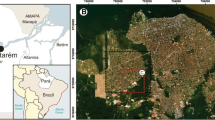Summary
In South Twenthe, an urbanized area in the eastern part of The Netherlands, there is a considerable demand for sand. For the coming ten years the estimated requirement, mainly for road construction, is 20 million m3.
For several reasons it is difficult to meet this demand:
-
1.
In various parts of the above mentioned area sand is very scarce and of poor quality.
-
2.
In the densely populated area under discussion there is much competition with regard to the use of space, for wh h reason permits for the construction of sand-pits are difficult to obtain.
-
3.
Due to the complexity of the geology, exploration is time-consuming and consequently expensive.
The Geological Survey has carried out investigations in order to obtain an overall picture of the distribution of the sandbodid and the quality of the sand. Lithologic descriptions of previously drilled holes were studied and new holes have been drilled More detailed surveys have been carried out in prospective areas, not only with the aid of drilled holes, but also by means of geo-electrical methods, and the penetrometer.
Although the area of South Twenthe was not entirely investigated, a satisfactory picture of the possibilities for sand exploitation has been acquired.
Résumé
La demande en sable est considérable dans le sud de la province Twente, une région urbanisée située à l’est des Pays-Bas. Les besoins, pour les dix années à venir, sont estimés à 20 millions de m3, destinés en grande partie à la construction de routes.
Il est difficile de pourvoir à cette demande pour les raisons suivantes:
-
1.
Dans certaines parties de la région ci-dessus mentionnée, le sable y est rare et de qualité pauvre.
-
2.
Il existe une forte concurrence en ce qui concerne l’utilisation de l’espace de cette région à population dense, raison pour laquelle il est difficile d’obtenir des permis pour le creusement de sablières.
-
3.
En raison de la complexité de la géologie, l’exploration prend beaucoup de temps et est, en conséquence, chère.
Le Service Géolgique a effectué des prospections afin d’obtenir un aperçu de la répartition des dépôts de sable ainsi que de la qualité du sable.
Les descriptions lithologiques de forages déjà existants ont été étudiées et de nouveaux forages ont été effectués. Des études plus détaillées ont ensuite été faites dans des contrées favorables, non seulement à l’aide de forages, mais également à l’aide de méthodes géo-électriques et le pénétromètre.
Une image satisfaisante des possibilités d’exploitation de sable a été acquise, malgré que tout le sud de la Twente n’ait pas été prospecté.
Similar content being viewed by others
Author information
Authors and Affiliations
Rights and permissions
About this article
Cite this article
v. d. Meene, E.A. Geological investigations for sand supply in the east part of the netherlands. Bulletin of the International Association of Engineering Geology 10, 19–21 (1974). https://doi.org/10.1007/BF02634625
Issue Date:
DOI: https://doi.org/10.1007/BF02634625




